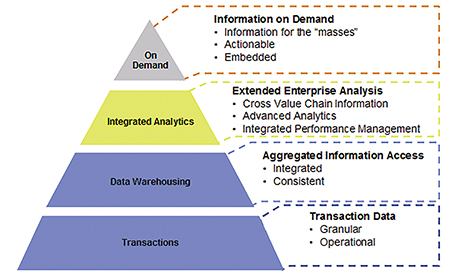
![]() Avail Technologies, State College, PA, is an intelligent transportation systems (ITS) solutions provider for public transit operators in the United States, specializing in CAD/AVL solutions for fixed route and paratransit. In an interview with BUSRide, Kiel Knisely, fixed-end software development lead at Avail Technologies, answered questions about data warehousing in public transportation.
Avail Technologies, State College, PA, is an intelligent transportation systems (ITS) solutions provider for public transit operators in the United States, specializing in CAD/AVL solutions for fixed route and paratransit. In an interview with BUSRide, Kiel Knisely, fixed-end software development lead at Avail Technologies, answered questions about data warehousing in public transportation.
Please define data warehousing.
Kiel Knisely: Data warehousing is the structure of data that drives business intelligence. Designed to decrease the amount of time it takes to sift through data, it involves taking all manner of source data – financial data, ridership data, and other source types – and optimizing it for analysis and reporting.
 How can transit agencies best utilize data warehousing?
How can transit agencies best utilize data warehousing?
Knisely: Agencies can utilize data warehousing in a multitude of areas – really every department at your agency produces some sort of data that can be mined and analyzed to produce actionable business intelligence. Pulling data from multiple sources and vendors can help agencies find anomalies or efficiencies that they can use to make their service better. The more data you pull in, the more benefit you’re going to get. Data warehousing is all about optimizing data organization for intelligent reporting.
As an example, financially, agencies want to know how much they’re spending on a customer per ride, so if they have the financial data available, they can pull that in along with the ridership data. Then they can more efficiently analyze what it is costing on a per rider basis, and can tweak routes to handle either high or low figures. You can modify the routes to provide a better cost efficiency. It’s about taking data from multiple areas and using it to see the bigger picture.
How can data warehousing increase the efficiency of transit agencies?
Knisely: Agencies can preset and create automatic filters that get aggregated on the data. For example, in Avail Technologies’ system, if there’s a detour, agencies can flag data associated with the detour to quickly identify outlying data that isn’t part of their regular operations. Agencies can also add dimensions to their data analysis to compare their data. To name an example, weather data combined with agency data can be used to determine patterns that could affect ridership and service.
Quick recollection, analysis, and the ability to add dimensions lead to increased efficiency by eliminating the need to sift through multiple reports or search data across various databases. Data warehousing saves agencies time, resources, and money that can be reinvested into serving their ridership.
What tools are available to really take advantage of data warehousing?
Knisely: If an agency is thinking about adopting data warehousing the first step before you pick a tool is to look at what your sources of data are. Qualified ITS integrators can help an agency really examine what they have and say, “Where is all this data coming from and what do you want to do with it?” Once that’s identified, their qualified ITS integrator will know how to put this into a data warehousing solution, and mine the data to get them the answers they’re looking for. A good ITS integrator is going to know which data to collect to feed into any number of business intelligence tools on the market today. Data warehousing is the foundation for getting informed decisions from business intelligence tools to better serve your riders today and in the future.
